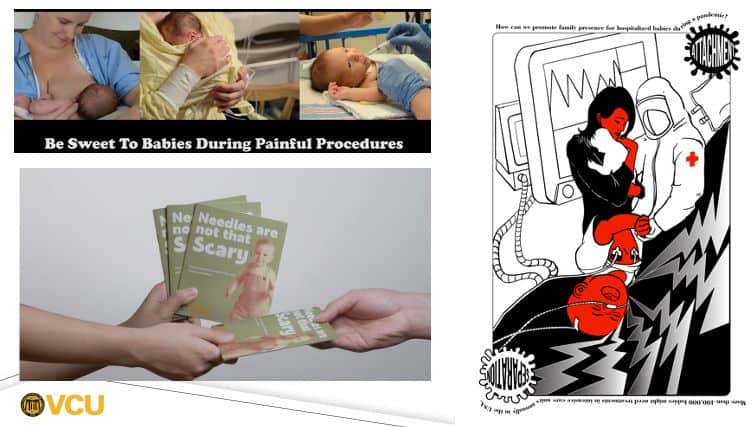
Nan He, an accomplished designer currently residing in the United States, showcased her award-winning work, “Needles Are Not That Scary,” at the Transforming Healthcare Through Evidence-based Practice National Summit, organized by the Helene Fuld Health Trust National Institute for Evidence-based Practice in Nursing and Healthcare. The summit, held biennially in Columbus, Ohio, brings together nursing and transdisciplinary clinicians, leaders, academicians, and researchers to explore the latest evidence-based practices that improve healthcare quality, safety, policy, patient outcomes, and costs.
Nan ‘s project, “Needles Are Not That Scary,” is a concise and engaging guidebook aimed at reducing the impact of the pandemic on children by bridging the information gap. During the design process, she analyzed the shortcomings of existing guidance materials in the market and the challenges readers may face in specific usage scenarios. One such challenge is the selection of images and visual representation, where the project intentionally incorporates positive and joyful imagery. In recent years, the healthcare industry has recognized the significant influence of images in conveying information to individuals. The use of photos depicting crying children in medical settings has led to a widespread negative perception, leading many to believe that children’s healthcare experiences involving needles are inevitably distressing.
The overall design of the guidebook boldly employs vibrant colors and creative layouts, aiming to capture the attention of parents who may hold preconceived notions about children’s medical experiences. Typically, healthcare instructions and guidance rely on rigorous and technical language presented in lengthy paragraphs. However, in the context of the guidebook’s usage, readers are often encountered in clinics, hospitals, or vaccine registration windows, where they may also be attending to their children. The presence of dense content increases the likelihood of interruptions or abandonment. Therefore, professional language is transformed into easily understandable text, and visual elements are used to replace some of the textual information, significantly reducing the time required for readers to obtain essential information.
Contrary to the common perception that children are resilient to or dislike activities involving needles, it is surprising to learn from relevant data that their resistance does have an impact. Approximately half of the parents acknowledge that their children’s crying and the pervasive depiction of distressed children in promotional images significantly influence their decision to vaccinate their own children.
In reality, through the application of simple techniques, it is possible to minimize children’s fear and crying during needle procedures. The industry already has various literature and guidelines addressing strategies for preventing children’s distress. However, the writing style in medical literature tends to be rigorous and complex, making it less accessible to the general population of parents and caregivers, who would benefit greatly from these valuable insights.
Nan ‘s project, “Needles Are Not That Scary,” exemplifies the power of design in disseminating important information effectively and bridging the gap between healthcare professionals and parents. By addressing the unique challenges and concerns of parents in a visually appealing and engaging manner, the guidebook plays a crucial role in empowering parents to make informed decisions regarding their children’s healthcare.
About Guest Author:
Haonan Li, A dedicated founder, media strategist, and social worker. Haonan Li is currently a graduate student at Columbia University School of Social Work.







